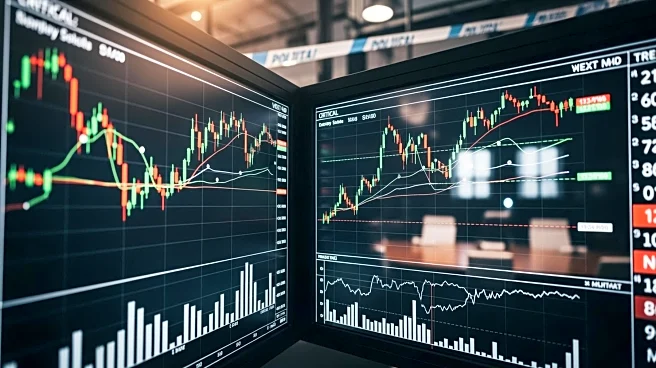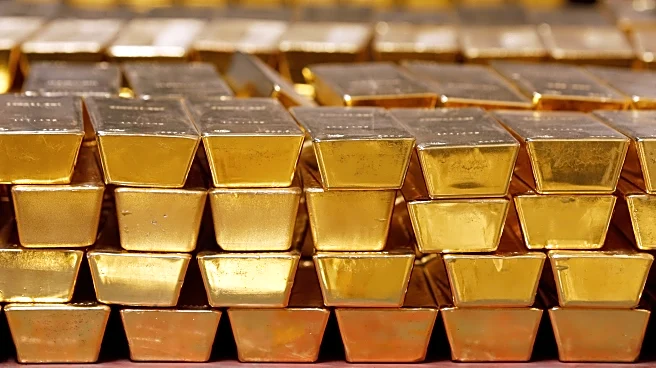What's Happening?
Gold prices have reached near-record highs, trading at approximately $4,118 per ounce as of October 24, 2025. This follows a volatile week where gold prices dipped to around $4,082 before recovering. Silver
prices have also seen fluctuations, trading near $48.7 per ounce. The price movements are influenced by expectations of Federal Reserve rate cuts and continued central-bank gold purchases. Analysts predict further rate cuts by the Federal Reserve, which could drive gold prices even higher. The demand for gold as a safe-haven asset is bolstered by geopolitical tensions, including U.S.-China trade conflicts and a partial U.S. government shutdown.
Why It's Important?
The surge in gold prices reflects broader economic uncertainties and investor sentiment towards safe-haven assets. As the Federal Reserve considers further rate cuts, the attractiveness of non-yielding assets like gold increases, potentially impacting investment strategies across various sectors. Gold mining companies and ETFs are experiencing significant gains, with major firms like Barrick Gold and Newmont benefiting from higher prices. The trend highlights the metals sector's strength compared to other stock indexes, which have remained flat or declined in 2025. This development underscores the role of gold as a barometer for economic stability and investor confidence.
What's Next?
Market analysts anticipate continued volatility in gold prices, with potential for further increases if the Federal Reserve proceeds with rate cuts. Traders are closely monitoring upcoming U.S. employment data and the next Federal Reserve meeting for additional signals. The outlook remains bullish, with major banks raising their price targets for gold and silver. However, some caution that a short-term correction could occur, emphasizing the need for investors to remain vigilant amid ongoing economic uncertainties.
Beyond the Headlines
The current rally in gold prices may indicate deeper economic imbalances and shifts in global monetary policy. As central banks continue to stockpile gold, the metal's role as a financial stability indicator becomes more pronounced. The situation also raises questions about the long-term implications of relying on precious metals as safe-haven assets in an uncertain monetary environment.












